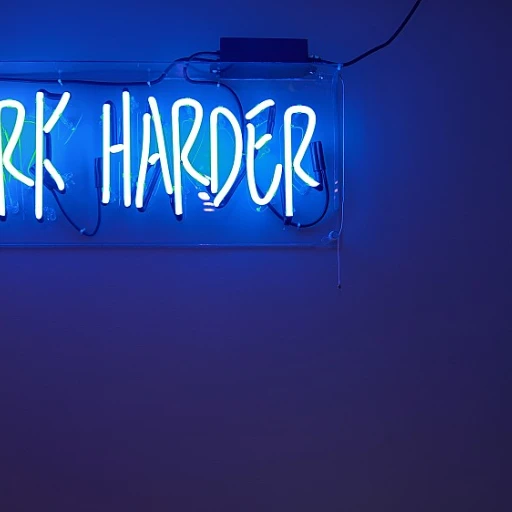
Understanding the Skills Gap in Healthcare
The Current Landscape of Skills Mismatch in Healthcare
The healthcare sector is constantly evolving, with technological advancements and regulatory changes reshaping job roles, including those of medical assistants. The skills gap in healthcare is primarily characterized by the discrepancy between skills medical assistants possess and those required by employers. This gap can significantly affect job performance, leading to inefficiencies and unmet expectations in delivering quality patient care.
Human resources departments are faced with the challenge of addressing these gaps through effective employee evaluation and performance review processes. A comprehensive understanding of the job description, alongside regular performance reviews and assistant evaluations, is critical. Such practices help employers identify where certified medical assistants may fall short, thereby informing targeted training programs aimed at rich employee engagement and performance improvement.
Using tools like evaluation forms and competency checklists can streamline the evaluation process, making it easier to identify specific skills gaps. Competency checklists not only aid in ongoing assistant performance assessments but also facilitate clear communication of goals and expectations.
Organizations are recognizing the importance of these tools in crafting initiatives that support continuous learning and adaptation. As we reflect on the importance of addressing the skills gap, it becomes critical to highlight how targeted strategies can lead to better job performance and potentially exceed expectations set within the team.
For those interested in bridging the skills gap in burgeoning fields, exploring different approaches such as becoming a green energy engineer can provide valuable insights into transferability and adaptability of skills across sectors.
The Role of Competency Checklists
The Importance of Competency Checklists in Healthcare
In today's rapidly evolving healthcare environment, the role of competency checklists has become essential in maintaining high standards of care. These checklists serve multiple purposes, facilitating the medical assistant's ability to meet the required job performance standards and exceed expectations. Medical assistants play a crucial role in ensuring optimal patient care, and competency checklists help to guide them towards achieving their goals. These checklists provide clear job descriptions and expectations, allowing medical assistants to understand what is expected of them and how they can improve their skills through regular evaluation and feedback.Structuring Employee Evaluations
Performance reviews and employee evaluations are integral to maintaining and improving the assistant's performance. Competency checklists act as a valuable tool in this process by offering a structured approach to evaluate job performance. This approach supports performance appraisal and provides a solid foundation for performance reviews. Medical assistant performance evaluation forms often feature key areas such as decision-making, employee engagement, and skills assessment. With a focus on continuous improvement, these forms enable human resources to give constructive feedback and set realistic performance goals. Moreover, competency checklists assist in creating a fair and transparent evaluation form, ensuring that each medical assistant receives an objective assessment of their work. This transparency fosters trust among team members and encourages a culture of continuous learning and development. The continuous use of these checklists in performance reviews allows healthcare facilities to identify skill gaps and address them effectively. By doing so, they ensure that their team of medical assistants operates at their best, providing exceptional care and maintaining the highest standards of the profession.Key Components of a Medical Assistant Competency Checklist
Essential Factors in an Effective Competency Checklist
A well-structured medical assistant competency checklist is a vital tool for bridging the skills gap effectively. It not only supports evaluations but also aligns with performance appraisals, ensuring both increased employee engagement and enhanced job performance. To create a useful checklist, consider these critical elements:- Detailed Job Descriptions: The checklist should directly correlate with the precise job descriptions medical assistants perform. It’s crucial to outline the skills and tasks expected, whether routine or specialized.
- Assessment Criteria: Clearly define the criteria for each skill or task. This allows for a straightforward assessment, forming the basis of the performance evaluation. Ensure the criteria are measurable, and where applicable, include decision-making and problem-solving abilities.
- Consistent Evaluation Methods: Utilize consistent evaluation forms to maintain objectivity across assessments. This also simplifies the process for human resources, ensuring every employee understands the expectations.
- Feedback Mechanisms: Incorporate avenues for constructive feedback, both from peers and supervisors, during review processes. Feedback should not only be a measure of current proficiency but a guidepost for future development.
- Developmental Goals: Align competency checklists with other performance appraisal tools to foster growth-oriented goals. Encourage medical assistants to exceed expectations by including goals that challenge and inspire.
- User-Friendly Formats: Include formats such as PDFs to facilitate ease of use and access. It’s beneficial for the checklist to be adaptable across different digital platforms, ensuring smooth updates and distribution.
Implementing Competency Checklists in Performance Reviews
Integrating Competency Checklists into Performance Evaluations
In the realm of assessing job performance, particularly for medical assistants, leveraging a competency checklist proves invaluable. When integrated into performance reviews, these checklists offer a structured approach to evaluating an assistant's job performance against predefined standards. The use of a competency checklist in performance evaluations provides a tangible form for gauging skills. This evaluative tool guides decision-making processes in human resources by offering clear insights into employee capabilities. Conducting a medical assistant evaluation with a detailed checklist ensures each employee's performance is measured against the job description, mitigating subjective bias. Structured Feedback Mechanism A well-designed evaluation form functions as a feedback mechanism both for the medical assistant and the organization. It facilitates open discussions about assistant performance, setting actionable goals for improvement.- Ensures consistency in performance reviews and appraisals.
- Provides documented evidence of skills and areas needing development.
- Helps the employee understand if they meet or exceed expectations.
- Encourages employee engagement and productivity by involving them in the evaluation process.
Benefits of Addressing the Skills Gap
The Impact of Competency Checklists on Bridging the Skills Gap
Addressing the skills gap in healthcare, particularly for medical assistants, involves more than just identifying areas for improvement. The implementation of competency checklists plays a significant role in enhancing job performance and promoting employee engagement. Here are some key benefits of addressing the skills gap through competency checklists:- Clear Expectations: Competency checklists provide medical assistants with a clear understanding of the skills and standards expected in their roles. This clarity helps employees focus their efforts on meeting and exceeding these expectations, thereby enhancing job performance.
- Objective Evaluation: By using a structured evaluation form, supervisors can offer fair and objective performance appraisals. This not only helps in identifying areas needing improvement but also highlights where employees exceed expectations, encouraging continuous professional development.
- Targeted Feedback: Competency checklists facilitate detailed feedback during performance reviews. With this feedback, medical assistants can better understand their job performance and align their goals to meet the organization's objectives.
- Customized Development Plans: Armed with evaluation forms, human resources teams can design customized training programs that address specific skill gaps, ultimately helping medical assistants grow and excel in their careers.
- Increased Employee Engagement: Regular assessment and feedback improve employee engagement by making assistants feel valued and supported in their professional growth. Engaged employees are more likely to remain committed to their roles and the organization.












